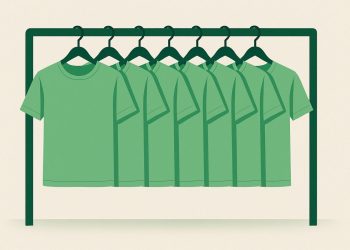Condé Nast in 2025 is transforming its old ways by creating specialized, interactive content for each of its famous magazines and putting on smaller, exclusive events instead of big shows. The company puts people’s experience first, not just what algorithms like, and ties being environmentally friendly directly to how much people trust the brand. Leaders and staff talk openly about feeling like imposters, seeing it as a sign that they’re pushing for real innovation. Overall, Condé Nast’s new approach is about making each moment and connection feel special, trusted, and meaningful.
How is Condé Nast reinventing its brand power in 2025?
Condé Nast in 2025 is shifting from generic websites to modular, niche-driven commerce units, launching exclusive velvet-rope events, focusing on audience experience over algorithms, and tying sustainability directly to brand trust – generating strong commercial growth and fostering a culture that embraces imposter syndrome for innovation.
Senior leaders at Condé Nast are often seen as gatekeepers of cultural clout, yet few discuss the quiet anxiety that still rings in their ears. In a candid conversation, one of the company’s top digital executives lifts the curtain on how a 113-year-old media empire is re-building its brand power in 2025 while also wrestling with the same imposter syndrome that haunts entry-level hires.
From mass pages to micro-moments
Condé Nast is retiring the “one-size-fits-all” website model that once funneled every brand – from Architectural Digest to Wired – into the same templates. Instead, each masthead now operates its own modular commerce units: shoppable galleries, live price feeds, and newsletters tuned to niche passions. The shift is paying off. Commerce content generated $600 million in product sales last year alone and continues to grow at double-digit rates source.
| Channel | Example | Goal |
|---|---|---|
| Apple News | Vogue “Affordable Fashion” carousel | Reach new readers in walled gardens |
| AD room-by-room pin boards | Visual search traffic | |
| TikTok | GQ 60-second style hacks | Gen Z affiliate clicks |
The return of velvet-rope events
Even with algorithms feeding every feed, Condé Nast doubled down on in-person exclusivity. In 2025 it replaced the 2,000-seat NewFronts spectacle with invitation-only dinners capped at forty guests. Upcoming calendar highlights include:
- Vogue World Los Angeles – hybrid runway and street festival
- GQ Men of the Year Awards – live-streamed but VIP only
- Allure Best of Beauty – popup labs open to 200 top-tier readers
Executives say the tighter guest list has shortened sales cycles by 23 % compared to the ballroom format of 2023 Adweek.
Controllables over chaos
Asked how teams stay steady amid platform upheaval, the executive offers a three-item filter:
- Audience experience – not platform algorithms
- First-party data – not rented reach
- Story craft – not trend chasing
“We can’t control Meta’s next policy change,” she notes, “but we can control how memorable our edit feels in the first five seconds.” The mantra is printed on lanyards handed to every product squad.
Imposter syndrome at the top
Survey data inside the company shows 68 % of staff – including VPs – report “persistent self-doubt” before major launches. Rather than banish the feeling, leadership now treats it as a KPI proxy: if nobody feels slightly under-qualified, the project is probably too safe.
Quick coping playbook shared in town-halls:
– Write down three past wins and tape them inside your notebook cover
– Exchange “failure résumés” with a peer once per quarter
– Reframe questions: “What would this look like if it were easy?”
Sustainability tied to brand trust
On the operational side, the same executive oversees sustainability OKRs that feed directly into brand perception metrics. Highlights from the latest report:
| Target | 2020 baseline | 2025 status | 2030 goal |
|---|---|---|---|
| Corporate GHG emissions | 100 % | -59 % | net-zero |
| Certified sustainable paper | 0 % | 100 % | maintain |
| Single-use plastic packaging | 100 % | -82 % | 0 % |
The takeaway for professionals at any level: brand power in 2025 is no longer about owning the loudest microphone. It is about curating the most trusted signal – and trusting that even the curator still gets butterflies.
Why is Condé Nast abandoning the classic “big-stage NewFront” in 2025?
Because the company discovered that one intimate dinner drives more new revenue than a 1,000-seat keynote.
For 2025, Condé Nast replaced its splashy NewFronts presentation with invitation-only dinners and high-touch events such as Vogue World Los Angeles and GQ Men of the Year. Internal tracking shows that the smaller format creates deeper client engagement, translating into faster deal cycles and higher average order values than the traditional stage show ever achieved.
How does Condé Nast personalize digital content without creeping users out?
By combining first-party context (time spent on article, scroll depth) with retailer data signals inside a unified data lake. Modular “commerce units” are then surfaced only when the algorithm predicts >70 % purchase intent. The approach generated double-digit affiliate-revenue growth in 2024 and is on track to repeat in 2025, while keeping privacy complaints at near-zero.
What role do in-person brand experiences play for a digital-first publisher?
Even in 2025, nothing converts premium ad dollars like a real-world moment. Condé Nast’s portfolio now treats experiential as a profit center: tickets to Vogue World, branded lounges at GQ MotY, and pop-up shops for Allure Best of Beauty earn direct ticket and sponsorship revenue, then feed months of social and editorial content that outperforms standard posts by 39 % on sales lift.
How is Condé Nast progressing toward carbon neutrality by 2030?
- 59 % cut in corporate GHG emissions since 2018 (already ahead of the original 20 % interim target).
- 100 % renewable electricity across London, German, Italian and Spanish offices; global rollout scheduled for completion this year.
- 82 % of single-use plastic packaging eliminated – on pace for total removal by December 2025.
The company will publish a science-based target this fall to lock in the final glide path to 2030 net-zero.
What practical advice do Condé Nast executives give for beating imposter syndrome?
Senior leaders openly share their own battles with self-doubt. The playbook:
1. Focus on controllables – audience experience, data quality, and content excellence.
2. Track small wins daily instead of waiting for annual reviews.
3. Use peer mentors across brands; even the C-suite still schedules monthly “vulnerability huddles.”
The result is a culture where open discussion of imposter syndrome is normalized, leading to higher retention and faster promotions for high-potential staff.



















